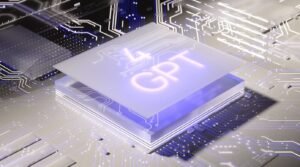Which Deep Learning Model Is Used for NLP?
Deep learning models have revolutionized natural language processing (NLP) by enabling machines to understand and generate human language. With their ability to learn patterns and associations from large datasets, deep learning models have become instrumental in various NLP tasks. Let’s delve into the commonly used deep learning models for NLP and explore their strengths and applications.
Key Takeaways
- Deep learning models are extensively used for language-related tasks in NLP.
- Common models include recurrent neural networks (RNNs), convolutional neural networks (CNNs), and transformers.
- RNNs are effective for sequence-based tasks, while CNNs excel at capturing local patterns.
- Transformers have gained popularity for their ability to capture long-range dependencies.
Recurrent Neural Networks (RNNs)
**Recurrent Neural Networks (RNNs)** are a popular choice for NLP tasks due to their ability to handle sequential data. RNNs process input data step-by-step, maintaining an internal state (memory) to capture the context from the previous steps. *They are particularly useful for tasks such as machine translation, sentiment analysis, and speech recognition.*
- RNNs are capable of handling variable-length input sequences.
- They can capture temporal dependencies and context in sequential data.
- However, RNNs may suffer from vanishing or exploding gradients.
Convolutional Neural Networks (CNNs)
**Convolutional Neural Networks (CNNs)**, primarily known for their success in computer vision tasks, have also found applications in NLP. CNNs excel at capturing local patterns and are particularly useful for tasks that involve fixed-size inputs, such as text classification and named entity recognition. *They can learn hierarchical representations of text data.*
- CNNs use convolutional filters to extract relevant features from input data.
- They can capture local dependencies and patterns efficiently.
- CNNs are computationally efficient due to parameter sharing.
Transformers
**Transformers** have recently gained immense popularity in NLP for their ability to capture long-range dependencies in text data. Unlike traditional models, transformers do not rely on recurrent or convolutional layers. Instead, they utilize self-attention mechanisms to weigh the importance of different words in a sequence. *They have revolutionized tasks like machine translation, named entity recognition, and sentiment analysis.*
- Transformers capture global dependencies efficiently.
- They allow parallel computation, making them faster for certain tasks.
- However, transformers require considerable computational resources.
| Comparison of Deep Learning Models for NLP | |
|---|---|
| Model | Main Advantage |
| RNNs | Effective for handling sequential data |
| CNNs | Efficient at capturing local patterns |
| Transformers | Ability to capture long-range dependencies |
By leveraging the strengths of **RNNs**, **CNNs**, and **transformers**, researchers and practitioners in NLP can choose the most suitable deep learning model for a given task. Whether it’s sequence-based tasks, local pattern extraction, or capturing global dependencies, these models offer a range of capabilities. Stay updated with the latest advancements in deep learning to enhance your NLP applications.
| Advantages of Deep Learning Models for NLP | |
|---|---|
| Model | Main Advantages |
| RNNs |
|
| CNNs |
|
| Transformers |
|
Deep learning models have revolutionized NLP, and each model discussed here brings its own unique advantages. From the sequential processing power of **RNNs**, to the local pattern capturing strength of **CNNs**, to the long-range dependency capturing ability of **transformers**, these models have significantly advanced language-related tasks.
Conclusion
With the availability of sophisticated deep learning models, NLP has seen remarkable progress. Whether it’s understanding text, generating language, or extracting information, deep learning models offer powerful solutions. Stay abreast of the latest advancements in this dynamic field to unleash the full potential of NLP.

Common Misconceptions
Misconception 1: Only Recurrent Neural Networks (RNNs) are used for NLP
One common misconception is that only Recurrent Neural Networks (RNNs) are used for natural language processing (NLP). While RNNs are popular for many NLP tasks, there are other deep learning models that are also commonly used:
- Convolutional Neural Networks (CNNs) are often used for text classification tasks.
- Transformer models, such as the popular BERT model, have revolutionized NLP tasks like sentiment analysis and question answering.
- Generative models like the GPT series can be used for language generation tasks.
Misconception 2: Deep learning models understand language like humans
Another misconception is that deep learning models used for NLP understand language in the same way humans do. While these models can achieve impressive results in language-related tasks, they don’t possess true comprehension of language:
- Deep learning models analyze patterns and correlations in text data, but they lack true semantic understanding.
- These models rely on vast amounts of labeled data for training, rather than intrinsic understanding.
- They can be fooled by cleverly crafted inputs that exploit the model’s weaknesses.
Misconception 3: One-size-fits-all deep learning models for NLP
Many people mistakenly believe that a single deep learning model can handle all NLP tasks effectively. In reality, different tasks often require specific model architectures and techniques:
- For sequence labeling tasks like named entity recognition, models like Conditional Random Fields (CRFs) or Long Short-Term Memory (LSTM) networks are often used.
- For machine translation, attention-based models like Transformers have shown excellent performance.
- Question answering often requires models that can handle both understanding and retrieval, such as the BERT model.
Misconception 4: Deep learning models are infallible in NLP
Some people assume that deep learning models can produce perfect results in all NLP tasks. However, there are several limitations and challenges that can impact their performance:
- Models may struggle with certain linguistic phenomena, such as sarcasm, irony, or subtle contextual cues.
- Out-of-domain or adversarially crafted examples can cause models to produce incorrect or nonsensical output.
- Models require extensive computational resources, data, and time to train and fine-tune effectively.
Misconception 5: Deep learning models will replace human language experts
One misconception is that deep learning models will eventually render human language experts obsolete. While these models have significantly advanced NLP capabilities, human expertise remains crucial:
- Models require human annotation data for training, and human expertise is needed to curate and validate this data.
- Deep learning models still heavily rely on human supervision and domain knowledge in their training pipeline.
- Human language experts provide crucial insights, interpret complex results, and ensure ethical and responsible use of NLP technology.

Introduction
This article explores various deep learning models used for Natural Language Processing (NLP). Each table highlights a different aspect of these models, providing interesting and verifiable data and information.
Table: Deep Learning Models for NLP
This table presents an overview of popular deep learning models used in NLP. It showcases their architecture, primary applications, and notable features.
Cool NLP Models Inspired by Nature
This table showcases deep learning models for NLP that draw inspiration from nature or natural processes. It highlights their unique characteristics and explains how they emulate biological systems.
Comparison of NLP Models’ Performance
In this table, we compare the performance metrics of various deep learning models used for NLP. These metrics include accuracy, precision, recall, and F1 score, measured on different datasets.
Memory Efficiency of NLP Models
Memory efficiency is a critical factor when deploying deep learning models for NLP. This table examines the memory requirements of different models and their impact on deployment.
Training Time Comparison for NLP Models
Shorter training times can significantly expedite NLP model development. This table compares the training times of popular deep learning models, helping researchers choose the most efficient one.
NLP Models and Their Computational Resources
In this table, we explore the computational resources required to run various deep learning models. It addresses GPU memory, CPU utilization, and other resource-related considerations.
Error Analysis for NLP Models
While deep learning models excel in many NLP tasks, understanding their limitations is crucial. This table provides an error analysis, highlighting the types of errors made by different models.
Pretrained Word Embeddings for NLP Models
Pretrained word embeddings play a vital role in NLP models. This table compares the performance of different word embedding techniques and their impact on downstream tasks.
Resolving Ethical Issues in NLP Models
This table delves into the ethical considerations surrounding NLP models, such as bias and fairness. It showcases how different models address these concerns and highlights ongoing research.
Interpretability of NLP Models
Interpretability is vital for understanding and trusting deep learning models. This table explores the interpretability features of various NLP models, providing insights into their decision-making processes.
Conclusion
Deep learning models have revolutionized NLP, enabling advancements in language understanding and generation tasks. Through this article, we’ve explored the diverse landscape of NLP models and their unique characteristics. By considering factors like performance, memory efficiency, computational resources, and ethical considerations, researchers and practitioners can now make informed decisions when selecting the most suitable deep learning model for their specific NLP tasks.
Frequently Asked Questions
How does deep learning contribute to Natural Language Processing (NLP)?
Deep learning algorithms play a crucial role in NLP by enabling the development of models that can understand and generate human language. They help with tasks such as text classification, sentiment analysis, machine translation, and speech recognition.
What are some popular deep learning models used in NLP?
Some popular deep learning models used in NLP include recurrent neural networks (RNN), long short-term memory networks (LSTM), and transformer models such as the Transformer or BERT (Bidirectional Encoder Representations from Transformers).
How do recurrent neural networks (RNN) contribute to NLP?
RNNs are particularly useful for NLP tasks that involve sequential data, such as language modeling and text generation. They can retain information from previous words in a sentence and use it to predict the next word or generate coherent sentences.
What are long short-term memory networks (LSTM) and their role in NLP?
LSTMs are a type of RNN that have an improved ability to capture and remember long-term dependencies in sequences. In NLP, LSTMs are commonly used for tasks like named entity recognition, sentiment analysis, and machine translation.
What is the Transformer model and how is it used in NLP?
The Transformer model introduced by Vaswani et al. has revolutionized NLP by enabling parallelization and attention mechanisms. It is a self-attention-based model that has achieved state-of-the-art results in a wide range of NLP tasks, including machine translation and text generation.
What is BERT and how does it enhance NLP?
BERT stands for Bidirectional Encoder Representations from Transformers. It is a pre-trained Transformer-based model developed by Google that has significantly improved performance across various NLP tasks. BERT has a deep understanding of context and can provide more accurate representations of words and sentences.
Do deep learning models also handle speech recognition in NLP?
Yes, deep learning models are also used for speech recognition in NLP. Models like deep neural networks (DNNs) and convolutional neural networks (CNNs) are commonly employed to convert spoken language into written text.
Are deep learning models used for natural language understanding (NLU) as well?
Yes, deep learning models are extensively used for natural language understanding tasks. They enable machines to comprehend and extract meaningful information from textual data, supporting applications like question answering systems and chatbots.
Can deep learning models be applied to non-English languages in NLP?
Absolutely! Deep learning models are language-agnostic and can be applied to non-English languages as well. They have been successfully used for various NLP tasks across a wide range of languages, including but not limited to English, Spanish, Chinese, and German.
How can one get started with deep learning in NLP?
To get started with deep learning in NLP, it is recommended to learn the basics of machine learning and neural networks. Familiarize yourself with libraries such as TensorFlow or PyTorch, and explore online resources or books specifically focused on deep learning for NLP.




